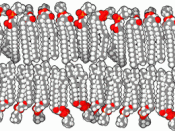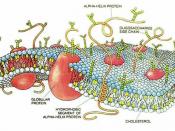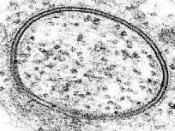The Effect of Temperature on the Movement of Pigment through Cell Membranes
Aim:
The aim of the experiment is to investigate the role of temperature on the movement on beetroot pigments.
Introduction:
The cell membrane is the important part of the cell and helps it to function and protect. It helps to prevent important substances inside the cell being lost and stop unwanted substances getting in. There are many different organelles within the cell membrane. The outside layer is made up of phospholipids. They give the membrane fluidity and prevent water soluble substances leaving and entering the cell. They have two parts to them. The phosphate "head" is hydrophilic and the bottom part, two fatty, hydrocarbon "tails" are hydrophobic. Therefore the top part can mix with water and the bottom cannot.
Within the phospholipid bilayer there are intrinsic and extrinsic proteins, also called transport proteins. These produce channels through the membrane enabling some substances to pass trough.
Diffusion is when particles or substances move from a high area of concentration to a lower one; down the concentration gradient. When a substance that is not small enough to pass through the membrane, and needs to travel through the transport protein, it may leave from a high concentration to a lower concentration. This is called facilitated diffusion, as it would be moving down the concentration gradient. Then equilibrium would be created.
Cholesterol is needed for the formation of the cell membrane. It prevents leakage of water and dissolved ions from the cell. Too much cholesterol is bad for the body and may lead to heart disease.
On the exterior of the bilayer are carbohydrate chains. If one of these chains is attached to a protein it is called a glycoprotein. These act as antigens, allowing cells to recognise one another and help...


